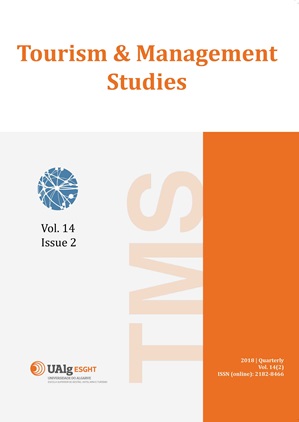Efficiency Determinants in Portuguese Banking Industry – an application through fractional regression models
Keywords:
DEA models, banking efficiency, fractional regression, efficiency determinantsAbstract
The participation in the Euro area and the current financial crisis substantially conditioned the development of the Portuguese banking industry, for which is expected a continuous fall in income and a growing competitive pressure, improving the need to look carefully to issues as efficiency as an essential survival factor. Efficiency indicators of the main banks operating in Portugal were measured through DEA methodology. The application of two-stage models allowed circumventing the usual problems inherent to the coexistence of the production and intermediation approaches. The application of regression for proportions, more appropriate than traditional linear and Tobit regressions, to deal with the fractional nature of the DEA scores, allowed the identification of efficiency determinant factors for the main banks operating in Portugal. The fractional regression models demonstrate evidence of improved specification comparing to traditional regression models. The variables that appear to major influence on overall efficiency are internationalization, size and type of ownership of capital.
References
Banker, R., Charnes & Cooper (1984). Some models for estimating technical and scale inefficiencies in data envelopment analysis. Management Science, 30(9), 1078-1098.
Beccalli, E., Casu & Girardone (2006). Efficiency and stock performance in European Banking. Journal of Business Finance & Accounting, 33(1-2), 245-262.
Casu, B. & Molyneux (2000). A comparative study of efficiency in European banking. Financial Institutions Center, Working Papers nº 17.
Charnes, A., Cooper & Rhodes (1978). Measuring the efficiency of decision making units. European Journal of Operational Research, 2, 429-444.
Charnes, A., Cooper & Rhodes (1981). Evaluating program and managerial efficiency: an application of Data Envelopment Analysis to program follow through. Management Science, 27(6), 668-697.
Chen, Y. & Zhu (2004). Measuring Information Technology’s indirect impact on firm performance. Information Technology and Management, 5(1-2), 9-22.
Coelli, T., Rao & Battese (1998). An Introduction to Efficiency and Productivity Analysis. Kluwer Academic Publishers.
Debreu, G. (1951). The coefficient of resource allocation. Econometrica, 19(3), 273-292.
Farrell, M. (1957). The measurement of productive efficiency. Journal of the Royal Statistical Society, 120, 253-281.
Girardone, C., Molyneux & Gardener (2006). Analyzing the determinants of bank efficiency: the case of Italian banks. Instituto Valenciano de Investigaciones Económicas, Retrieved February 7, 2011 from http://www.ivie.es/downloads/ws/ireb/ponencia04.pdf.
Hadad, M., Hall, Kenjegalieva, Santoso & Simper (2011). Banking efficiency and stock market performance: an analysis of listed Indonesian banks. Review of Quantitative Finance and Accounting, 37(1), 1-20.
Hoff, A. (2007). Second stage DEA: Comparison of approaches for modeling the DEA score. European Journal of Operational Research, 181(1), 425-435.
Jackson, P. & Fethi (2000). Evaluating the technical efficiency of Turkish commercial banks: an application of DEA and Tobit analysis. Efficiency and Productivity Research Unit, University of Leicester.
Kao, C. & Hwang (2008). Efficiency decomposition in two-stage Data Envelopment Analysis: an application to non-life insurance companies in Taiwan. European Journal of Operational Research, 185(1), 418-429.
Koopmans, T. (1951). An analysis of production as an efficient combination of activities, Activity Analysis of Production and Allocation. Cowles Commission for Research in Economics, Monograph 13, New York: Wiley.
Majid, M. & Sufian (2009). Bank efficiency and share prices in China: empirical evidence from a three-stage banking model. International Journal of Computational Economics and Econometrics, 1(1), 23-47.
Martins, A. (2009). Measuring the Efficiency of Banks using a Two-stage DEA Model. Encontros Científicos – Tourism & Management Studies, 5, 114-129.
Martins, A. (2010). Banks in Portugal: service producers or financial intermediaries?. Encontros Científicos – Tourism & Management Studies, 6, 131-145.
McDonald, J. (2009). Using least squares and Tobit in second stage DEA efficiency analyses. European Journal of Operational Research, 197(2), 792-798.
Murteira, J. & Ramalho (2016). Regression analysis of multivariate fractional data. Econometric Reviews, 35(4), 515-552.
Papke, L. & Wooldridge (1996). Econometric methods for fractional response variables with an application to 401(k) plan participation rates. Journal of Applied Econometrics, 11(6), 619-632.
Pasourias, F., Liadaki & Zopounidis (2008). Bank efficiency and share performance: evidence from Greece. Applied Financial Economics, 18(14), 1121-1130.
Pedro, C., Ramalho & Silva (2017). The main determinants of banking crises in OECD countries. Review of World Economics, https://doi.org/10.1007/s10290-017-0294-0.
Ramalho, E. & Ramalho (2009). Alternative regression models for explaining DEA efficiency scores. Departamento de Economia - CEFAGE EU, Universidade de Évora, April.
Ramalho, E., Ramalho & Henriques (2010). Fractional regression models for second stage DEA efficiency analyses. Journal of Productivity Analysis, 34(3), 239-255.
Ramalho, E., Ramalho & Murteira (2011). Alternative estimating and testing empirical strategies for fractional regression models. Journal of Economic Surveys, 25(1), 19-68.
Saghi-Zedek, N. (2016). Product diversification and bank performance: Does ownership structure matter?. Journal of Banking & Finance, 71, 154-167.
Seidel, G. & Almqvist (2008). Value in Focus - Achieving cost-efficiency in the European banking sector. Arthur D. Little – Financial Services.
Seiford, L. & Zhu (1999). Profitability and marketability of the top 55 US commercial banks. Management Science, 45(9), 1270-1288.
Sufian, F. & Majid (2007). Bank Mergers Performance and the Determinants of Singaporean Banks Efficiency – an application of two-stage banking models. Gadjah Mada International Journal of Business, 9(1), 19-39.
Tan, Y. & Floros (2013). Risk, capital and efficiency in Chinese Banking. Journal of International Financial Markets, Institutions & Money,
http://dx.doi.org/10.1016/j.intfin.2013.07.009.
Thanassoulis, E. (2003). Introduction to the Theory and Application of Data Envelopment Analysis: a foundation text with integrated software. 2nd Edition, Kluwer Academic Publishers.
Wang, C., Gopal & Zionts (1997). Use of DEA in assessing Information Technology impact on firm performance. Annals of Operations Research, 73, 191-213.
Zhu, J. (2009). Quantitative Models for Performance Evaluation and Benchmarking – Data Envelopment Analysis with Spreadsheets. 2nd Edition, Springer.
Downloads
Published
Issue
Section
License
Copyright (c) 2018 Tourism & Management Studies

This work is licensed under a Creative Commons Attribution-NoDerivatives 4.0 International License.
The journal retains published articles’ copyrights, but they are simultaneously licensed under the Creative Commons Attribution License (CC BY-NC-ND), which allows individuals’ to share the relevant papers as long as authorship and publication in this journal are duly acknowledged.



